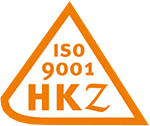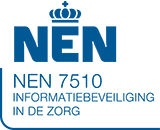How does the Dutch drug checking service work?
Drug checking is allowed in the Netherlands and gets more international recognition over time. From a politics point of view, this is a strange situation. Drugs are illegal by law but drug checking is tolerated. Many people from outside of the Netherlands find it difficult to understand this paradoxical situation, but also many Dutch citizens don’t fully understand how this works. Why is it that drug checking is allowed in the Netherlands? How does it work precisely?
History
At the end of the 80’s Stichting Adviesbureau Drugs (SAD) and Jellinek stepped forward as the pioneering organizations of drug checking. They were illegally testing drug samples of consumers. In that time (1987), SAD also started doing reagent testing (also see ‘how does testing work’) combined with health promotion and drug education at parties/events. They did this under the ‘Safe House Campaign’ banner. Reagent testing gave limited information about the drugs content. But it was better than no information at all. Back then, the drug market was not as complicated and diverse compared to now. So given information was generally very useful for the consumer.
The Drug Information Monitoring System (DIMS) was founded in 1992. In February 1999 the minister of health, minister Borst (Ministry of Public Health, Welfare and Sport) decided to centralize the drug checking and put the coordination of the DIMS program under the Trimbos Institute’s responsibility (Netherlands Institute of mental health and addiction).
The DIMS program further professionalized the drug-checking service in cooperation with another few alcohol and other drugs services (AoD services). Dancefloor testing moved to test locations in offices. You can read more about testing at parties and events here.
Monitor
Since 1999, the primary goal of DIMS is not to offer a service to the consumer, but to monitor the Dutch illicit-drug market. Based on its observations, action can be taken when an acute public health risk occurs. The possibility for the consumer to know what is in their drug is obviously a useful outcome as well.
Busy
Over the years the test service of DIMS has become better known by the general population. An increasing amount of people that use drugs access the service. Especially around the public holidays and the festival season. Last couple of years it happened frequently that more drug-samples were collected than the laboratory was able to analyze. There is simply not enough funds to send every collected drug-sample to the lab. Therefore, many consumers could not be provided the information about what is in their drug. The DIMS program has started researching other methods for analyzation since 2016 to accommodate these increased needs (see FTIR section).
How does testing work?
There are currently 31 drug checking service locations in the Netherlands (run by AoD- and public health services) where you can anonymously bring your drug-sample to. There are test-services and collection points. Collection points only collect drug-samples to send it directly to a DIMS-bureau. At the test-service, consumers are seen by health and prevention workers. Consumers get additional information about the test-service and the content of their drug-sample. This also creates the opportunity to answer any of the consumers questions and education. Experience has shown that visitors of the drug checking service share the gain knowledge with their friend, which dramatically increases the reach of the service. In order to test your drug, you need to bring at least one whole pill (logo clearly visible), 100mg of powder, 1 blotter or 2mililitre of fluid.
Powders, fluids and blotters
Collected samples are first tested trough reagent testing (marquis). The reaction of a drug with this reagent fluid provides an indication of what drug may be in the sample. Only an indication, as many drugs will give the same or a similar reaction. It also does not indicate how strong the drug sample is and if any other active substance is present in the drug. Powders, fluids and blotters are always sent to the laboratory because of this reason. It is impossible to identify the drugs exact content by just looking at the shape, colour or structure of the sample.
Pills
Pills, however, can sometimes be identified by these facets. Various characteristics are studied: logo, shape, type of breakline, diameter, thickness, profile (flat or bold), and colour. Also the outcome of the reagent test is one of the studied characteristics for recognition. By combining all these specific aspects, the pill can be recognized through the so called ‘weekly list’. The national DIMS-bureau only puts pills of which the exact content is known on this list, and the list is updated every week. If there is any doubt about the content, the pill is not put on the list.
Spread
When a pill is identified through the weekly list, the consumer is informed about the average dose and the spread. Pills containing an illicit substance such as MDMA are never produced with the same quality as medicines, which only may have a tiny maximum spread of the active substance. The spread of illicit drugs can be very big. This can make it difficult for the consumer to determine their dose. The spread is determined by the lowest- and highest measured amount of milligrams in the collected drug-samples. The true spread of that pill’s batch will always be bigger than the spread measured in the laboratory.
Analyzation
If a pill is not recognized then it is sent to the DIMS-bureau, in consultation with the consumer who provided the drug-sample, together with the other collected samples. All drug-samples are given a unique code which is also written on a card for the consumer to take home. The DIMS-bureau evaluates all collected samples of that week and determines, in combination with the information they were given by the test-service, what samples will and will-not be sent to the lab for further analysis. The laboratory measures through GC-MS and LC-DAD the samples exact content. Through the DIMS-bureau the test results are then communicated back to the drug checking service who collected the samples. The consumer can then call to the drug checking service a week after supplying the sample for their test result. The consumer is informed about the exact amount of the active compound when it is a commonly found drug (this is called quantification). Less known substances are often identified (this is called qualification) but not quantified because of the high cost involved. e.g. A sample can contain 50% cocaine, 8% levamisole and lidocaine (not quantified). At this point the following drugs are quantified: MDMA, amphetamine, methamphetamine, cocaine, levamisole, caffeine, 4-fluoramphetamine, 2C-B, fenacetine, ketamine. GHB can be (semi-)quantified through FTIR (see FTIR section).
Some substances cannot be analyzed through the standard method (GC-MS). This applies to LSD and GHB. Analyzation of these substances is a lot more expensive than the standard analyzation of most other substances. This also counts for quantifications of substances that are not standardly quantified (see the 10 drugs described above). Therefore, the amount of possible analyzations is limited.
FTIR
Since 2016 the DIMS program uses an extra analyzation technique. To be able to test the large amount of collected samples, the DIMS program has invested in a Fourier Transform InfraRed machine. This allows drug-samples to be analyzed faster and more cost efficiently. Analyzation through FTIR does have a couple of disadvantages.
First, the FTIR machine can only identify substances that make up at least 10% of the drug-sample. e.g. If an amphetamine sample contains 7% of caffeine, it won’t show up in the analysis. This, of course, can be risky. A sample containing a low percentage of a high-risk substance, without getting picked up by the analyzation, may cause dangerous situations. In reality this hardly ever occurs. When there are indications of amphetamine samples containing a possible more dangerous substance in low concentrations, the DIMS program will send all amphetamine samples to the lab for a long period of time for further control. So in practice, these risks are very low.
Secondly, the FTIR-machine is a little less accurate. Even a lab analysis has a certain margin of error. In the lab the margin of error has a maximum of 5%. But FTIR results van show a maximum error margin of 10-15%, dependent on the tested drug. Because of this less accurate measurement, the DIMS program has extensively studied the appliance of an FTIR-device to make it measure as precisely as possible to maintain reliable results. So FTIR-machine test-result are always mentioned with a spread. For example: The FTIR-machine indicates that a MDMA sample contains 71% MDMA. For accuracy, the consumer will also hear the spread: 61-81%. In most cases the true composition will be around 71%, but it may deviate a little (with a maximum of 10%)
The FTIR-machine provides less information than a laboratory analysis, but is still more informative then when the drug-sample would not have been tested because of the limited budget. If the DIMS program has any doubt about the content of a drug-sample after FTIR-machine analysis, they can always send the sample to the lab for further (more accurate) analyzation.
| Substance | Margin of error |
| Amphetamine | 15% |
| Caffeïne | 15% |
| GHB | 50 mg/ml |
| Ketamine | 10% |
| MDMA | 10% |
What drugs can be tested?
Almost all illicit substances can be tested, including novel psychoactive substances (NPS) like 4-fluor-amphetamine (4FA). It may occur that a substance is not yet in the laboratory’s database because of its novelty, but this does not happen often. Magic mushrooms, medicine, cannabis, tobacco, steroids, alcohol, smart-products and raw material are never tested.
Why does the government allow drug checking?
Warnings / Red-alerts
In the interest of public health, the government allows drug checking. The DIMS program has the task to monitor the illicit drug market and to inform consumers when potential dangerous situations occur. Warning the public has happened several times in the past. Chances are big that this has saved lives, but this is, of course, difficult to prove. For example: At the end of 2014 a pink superman pill (colour of pil + logo/shape) that contained a high dose of PMMA was picked up by the DIMS program. After putting out a warning the drug has not been seen at the drug checking services anymore and has not caused any incidents in the Netherlands.
List of risky pills
Since 2015 the DIMS program publishes a list of extra risky pills on drugs-test.nl. This does not mean that other pills don’t have risks, but these are pills you definitely don’t want to take. Because the DIMS program does not test all drugs that circulate on the market, this list is probably not complete. So it is important to be aware that pills that are not shown on this list may still contain highly dangerous substances. You can find the list here or can find it on the Red Alert App.
Education and prevention
The collected drug-samples provide a representation of the types of drugs that are used in the Netherlands and useful information about trends and other developments of the illicit drug market. A clear example of this is the vast increase of the average amount of MDMA in ecstasy tablets in the last few years. Because of this it was clear that more education and attention was needed for ecstasy. Especially the risks linked to the use of high doses of MDMA.
Conditions
One of the conditions of the DIMS program is that illicit activities, such as the selling and production of illicit drugs, is not stimulated. That is why only consumers are allowed to test their drugs and raw materials for producing drugs are not tested. Because the DIMS program only monitors the Dutch drug market, only samples that are bought in the Netherlands are tested. You can’t bring too many drugs. A maximum of 3 pills 1 gram of powder, 3 blotters or 10ml of liquid is tolerated.
Drug checking in other countries
The DIMS program drug checking service is a unique service. There are some other countries that have similar services (including England, Austria, Spain and Switzerland), but there is none that operates to such extent and for such a long period time. So please use this service and test your drugs before you take anything!
And check out the website of International Drug Checking Day.







